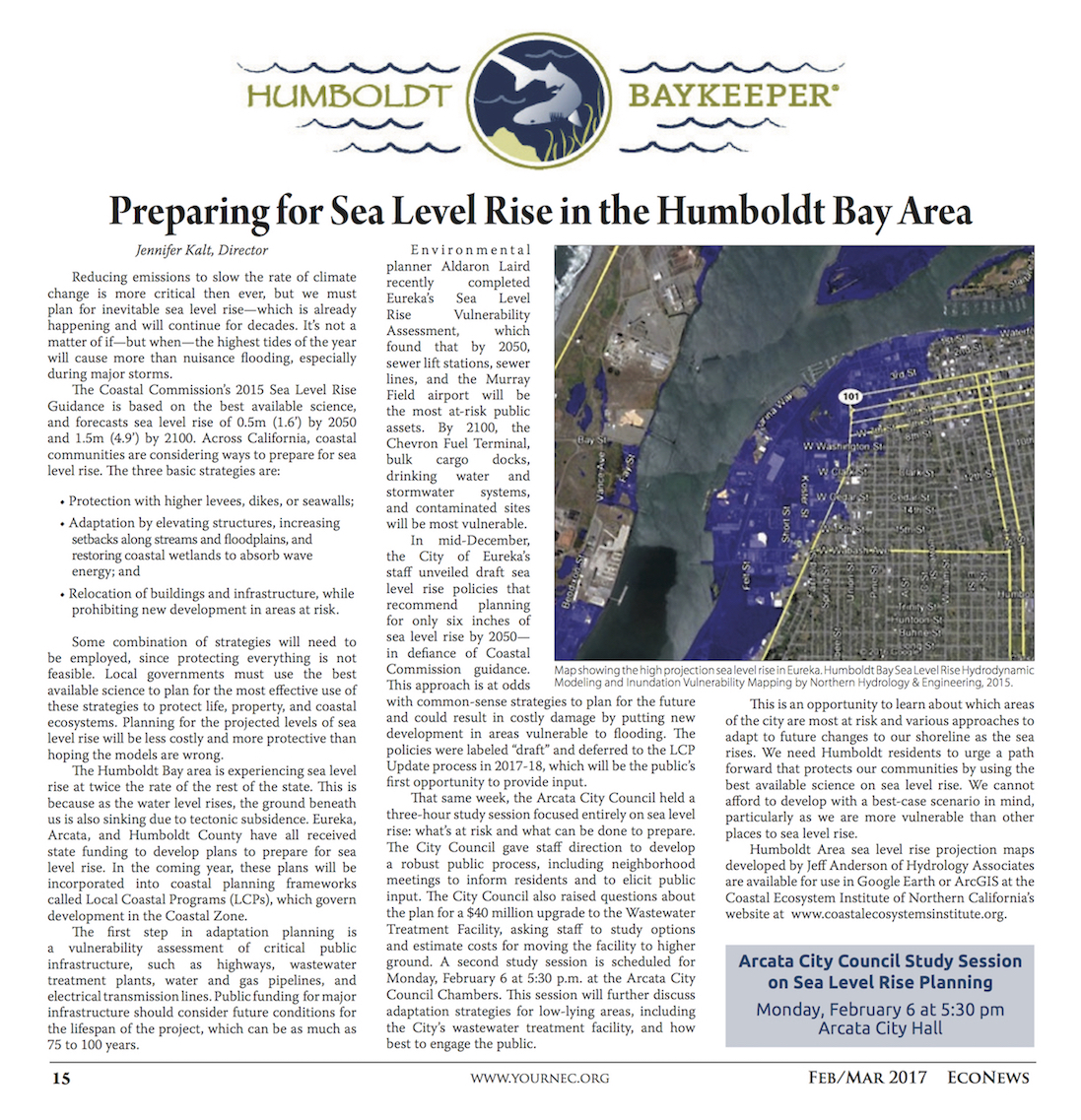1/30/17
Last week the National Oceanic and Atmospheric Administration “NOAA” issued a new 44-page report, “Global and Regional Sea Level Rise Scenarios for the United States.” They have created a new projection line for as much as 8.2 feet (2.5 meters) by 2100, the red colored line shown above, based upon a comprehensive assessment of the latest science primarily focused on Greenland and Antarctica. Eight feet of higher sustained sea level will be catastrophic for almost every coastal community in the world.
What makes this so hard to accept is that we have never had this level of sea level rise in all of human civilization. The last time sea level was higher than present was 120,000 years ago. Then it reached about 25 feet higher than present (7-8 meters). Based on the current temperature levels, we will almost certainly reach that height. The question is how soon. That does depend on how aggressively we work to reduce the level of greenhouse gases – largely carbon dioxide. In all my talks and briefings, I try to leave two takeaways:
- To slow rising sea level and the other effects of climate change, we must reduce greenhouse gases as quickly as possible. However, regardless of the fact that we can slow the rise, we can not stop it in the coming decades. The ice melting and the sea rising have passed a “tipping point” and will continue for centuries.
- We must begin planning and adapting to higher sea level NOW! That would be the smart thing to do recognizing the new record flooding in coastal areas, as a result of more severe storms, record rainfall, and extreme high tides, all compounded by rising oceans.
A few places are beginning the process to look at how to adapt to higher sea level — in fact there are dozens of communities around the US and globally that are starting to take this huge challenge quite seriously. This new NOAA Report and the 8 foot red line should add urgency to begin the process and to think ahead — so that our investments in buildings and infrastructure are truly good investments, ones that will protect us today and be a good foundation for communities of the future.
Read Entire Article
 Have you wondered what parts of the Humboldt Bay area are most threatened by sea level rise? According to this new report by Aldaron Laird of Trinity Associates, Highway 101 and 255, as well as the communities of King Salmon, Fields Landing, and Fairhaven could all be under water by 2050. Also at risk are municipal water and wastewater lines, electrical distribution infrastructure, gas lines, fiber-optic communications lines, and approximately 10,000 acres of agricultural land. By 2100, rail lines, marinas, boatyards, and docks will be at risk. How will we plan for the future?
Have you wondered what parts of the Humboldt Bay area are most threatened by sea level rise? According to this new report by Aldaron Laird of Trinity Associates, Highway 101 and 255, as well as the communities of King Salmon, Fields Landing, and Fairhaven could all be under water by 2050. Also at risk are municipal water and wastewater lines, electrical distribution infrastructure, gas lines, fiber-optic communications lines, and approximately 10,000 acres of agricultural land. By 2100, rail lines, marinas, boatyards, and docks will be at risk. How will we plan for the future?




